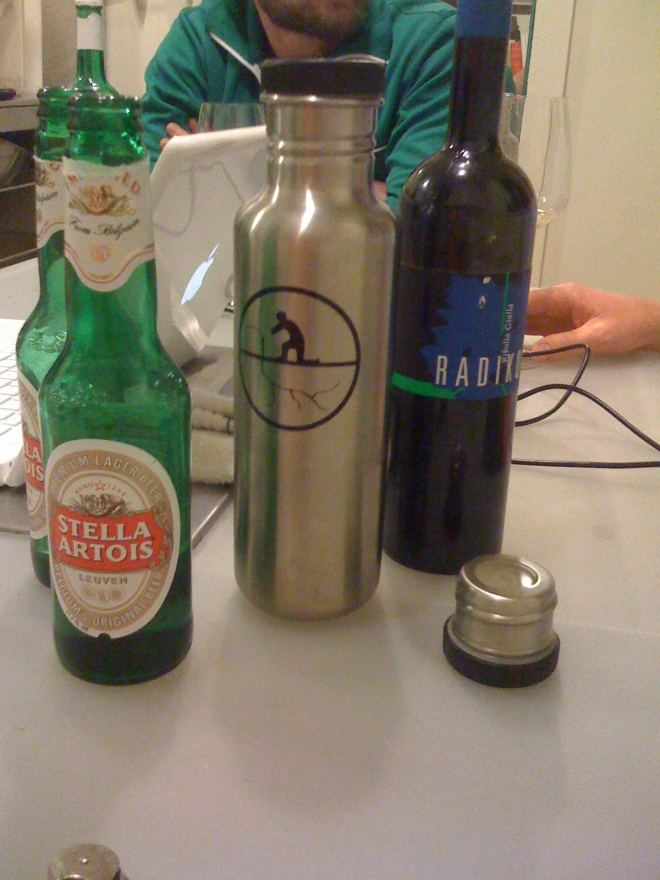
Above: The new tools of the trade?
One of my favorite aspects about the wine, specialty cocktail and food business is that it builds communities, from casual tasting groups to communal neighborhood gardens. And this is one reason tools like blogging, twitter, Chowhound and (gasp) even Yelp are so well-suited to the food and wine world, or at least to the people who get excited about those worlds. These are the tools that easily bring people together to form new (and hopefully lasting) communities.
A great recent example of creating a food or booze-centric community is San Francisco Cocktail Week, which just wrapped up the other night. I didn’t participate much this year because of deadline pressures, but the event was a success and I’ve heard from many people that this year’s was the best yet. I bring up SF Cocktail Week because in my opinion one of the main reasons San Francisco’s cocktail scene has evolved the way it has is because of the strong community ties among bartenders in this town. As local booze scribe Camper English puts it in his excellent essay, SF Cocktails: A Recent History, published on the SF Cocktail Week website:
What helps San Francisco bartenders stay current and at the top of their game is the fact that most of the top bartenders are members of the United States Bartenders’ Guild, visit each others’ venues, share information, value education, and collaborate on projects. We may see a flavor trend (yuzu, smoke) show up in a variety of bars, as we also see techniques (shrubs, fat washing) used across various types of ingredients. Good ideas don’t last long at a single venue in San Francisco- they spread rather quickly.
Recently I was invited to be on a podcast produced by Richie Nakano, aka linecook415. Richie and his friend and fellow cook Corey Nead (and their friend Amy) record an informative, fun and sometimes raucous podcast mostly about food, always about life in food, and sometimes about crocs. The three are all cooks at Nopa, one of San Francisco’s most popular and successful restaurants. I like the podcast – and Richie’s blog – because it’s not only a glimpse into the food community, it’s an invitation to join in the discussion.
I met Richie through blogging but the idea of doing this podcast came about via conversations on twitter between ourselves and Kevin Kelley of the Natural Process Alliance. And before Kevin or I could say ‘natural yeast’, we were sitting in Richie’s kitchen in front of a microphone talking wine, organics, natural wine and the aforementioned crocs. We covered other topics too, but you can listen for those yourselves. It’s a fairly long (and somewhat rambling) recording, so sit back and pour yourself something nice before digging in.


Above: Action shots!
Click here to listen or download the podcast.
Ramp fever, or some recent blog posts of note
Since we on the West Coast don’t really have ramps, I’ve satisfied my spring ramp fever reading my friend Jonathan Meyer’s delightful food blog, i8ny. After reading his post about making ramp butter, I might just have to smuggle a frozen stick back with me the next time I’m in New York.
And then David McDuff, one of Philly’s resident wine gurus, has a post and recipe up to make pickled ramps. Yum. David has also been consulting with me over buying a new bicycle to replace the one I had stolen recently from my garage. We both agree that it is, in fact, easier to buy Barolo or Burgundy than it is to get a new bike.
*Starting at the end of this week I’ll be traveling to Israel for a friend’s wedding and then New York for Wine & Spirits, so it will be quiet around here. You can always check in with me on twitter.









